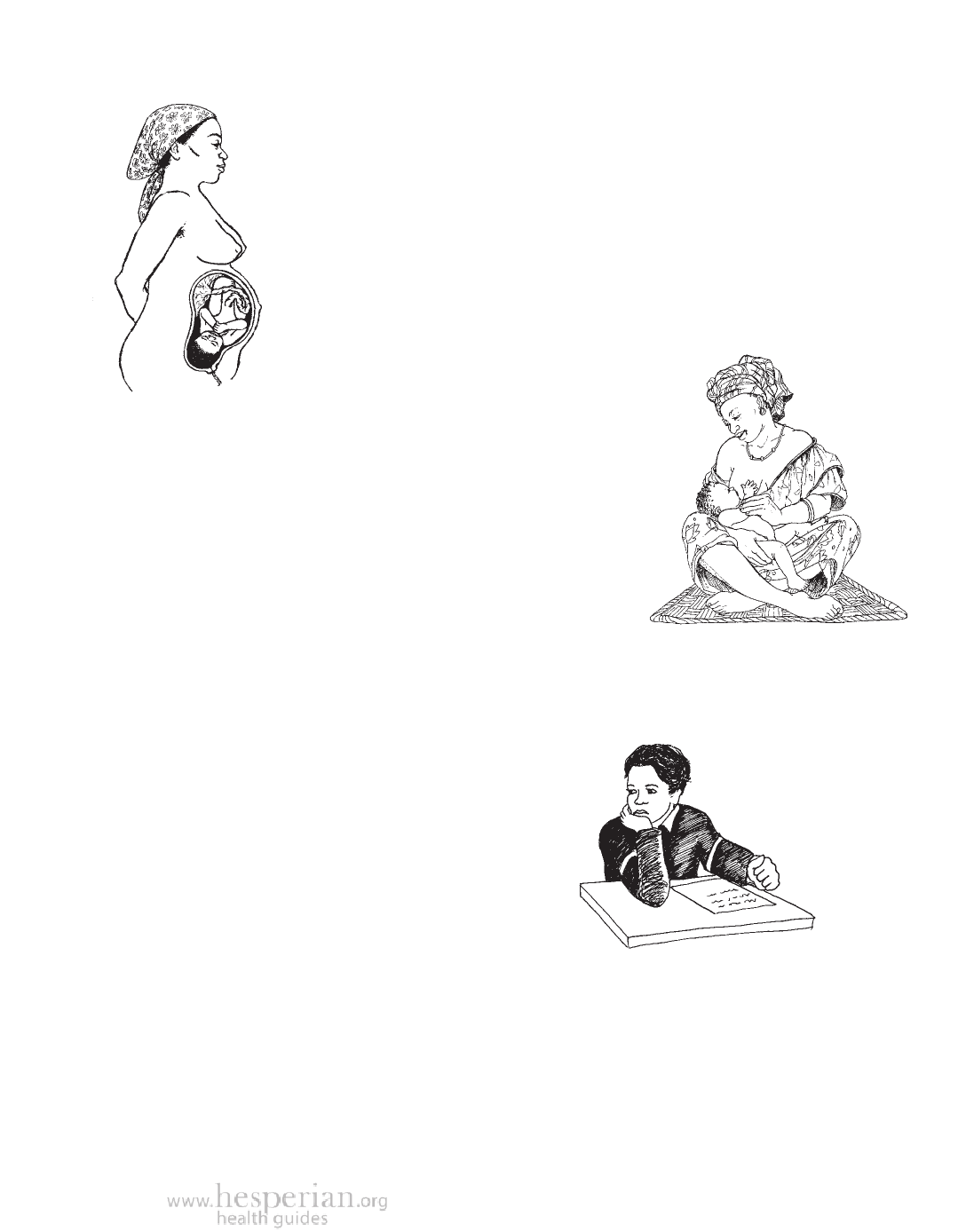
How Chemicals Harm Children 323
In the womb
Chemicals already in the mother’s body can be passed to a
developing baby during pregnancy. For example, a woman who was
exposed to lead as a child may still have lead in her bones. When she
is pregnant, the lead is passed to the baby in her womb.
Many toxic chemicals that a pregnant woman may be exposed
to, such PCBs, lead, mercury, and insecticides can pass through
the placenta into the growing fetus and cause harm.
Cigarette smoke, drugs, and alcohol can also harm a
baby in the womb and should be avoided during
pregnancy as well.
Birth to 2 years
A baby’s skin and digestive system allow more chemicals to
pass into the baby’s body.
Some chemicals that a mother is exposed to can
also collect in her breast milk and pass to the baby
during breastfeeding. Toxics can also pass to babies in
contaminated water used to mix formula and artificial
milks. Breast milk is still the best food for a baby.
Instead of avoiding breastfeeding to keep harmful
chemicals out of babies, women are organizing to keep
toxic chemicals out of breast milk.
Breast is best!
Infants and toddlers put everything in their mouths. This makes it easy for
them to swallow harmful substances.
2 years to 12 years
When children begin going to day care
(creche) or school, they may be exposed
to many new chemicals, for example,
if their schoolyards are sprayed with
pesticides. Children who work shining
shoes, scavenging through waste dumps,
or in other ways to make money are often
exposed to toxic chemicals. Besides causing
illness, toxics can also harm a young
person’s ability to learn.
Children exposed to toxics may learn
slowly, be irritable and restless, or
12 to 18 years old
show other signs of slow development.
Adolescence (teen age) is a time of fast
physical growth and change caused by hormones (see page 325). Toxic exposures
can seriously harm a young person’s ability to have healthy children later.
A Community Guide to Environmental Health 2012